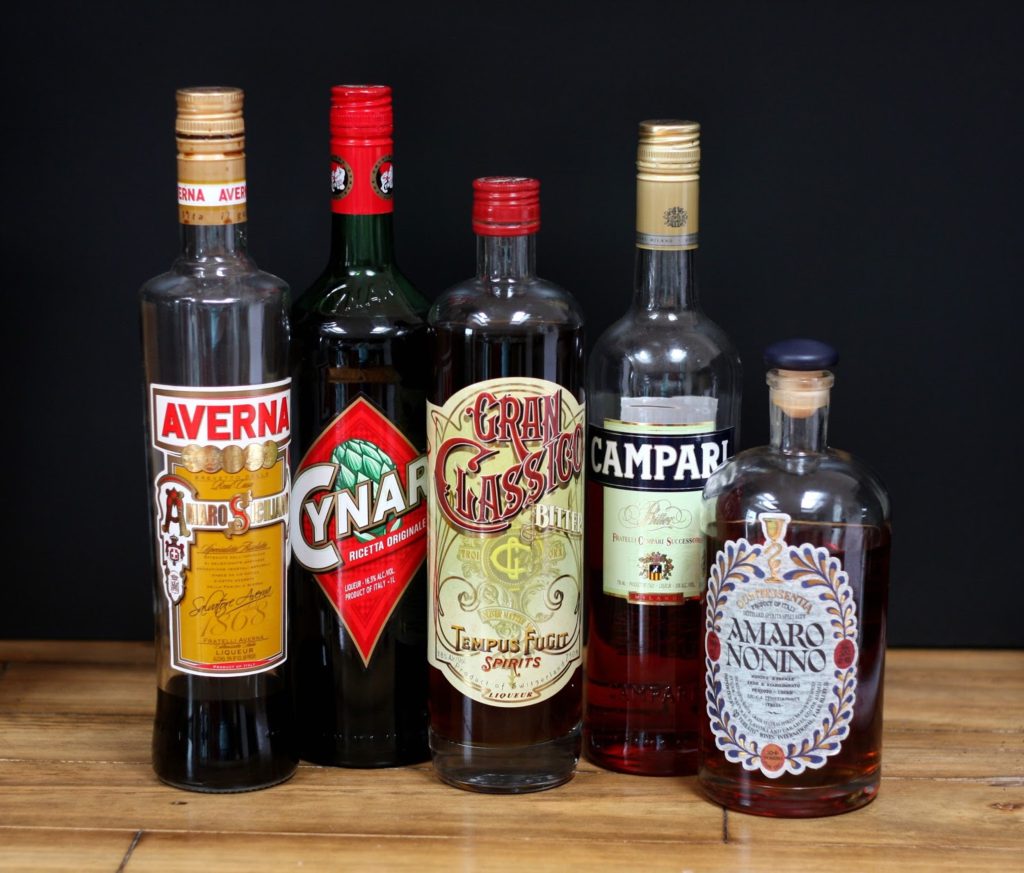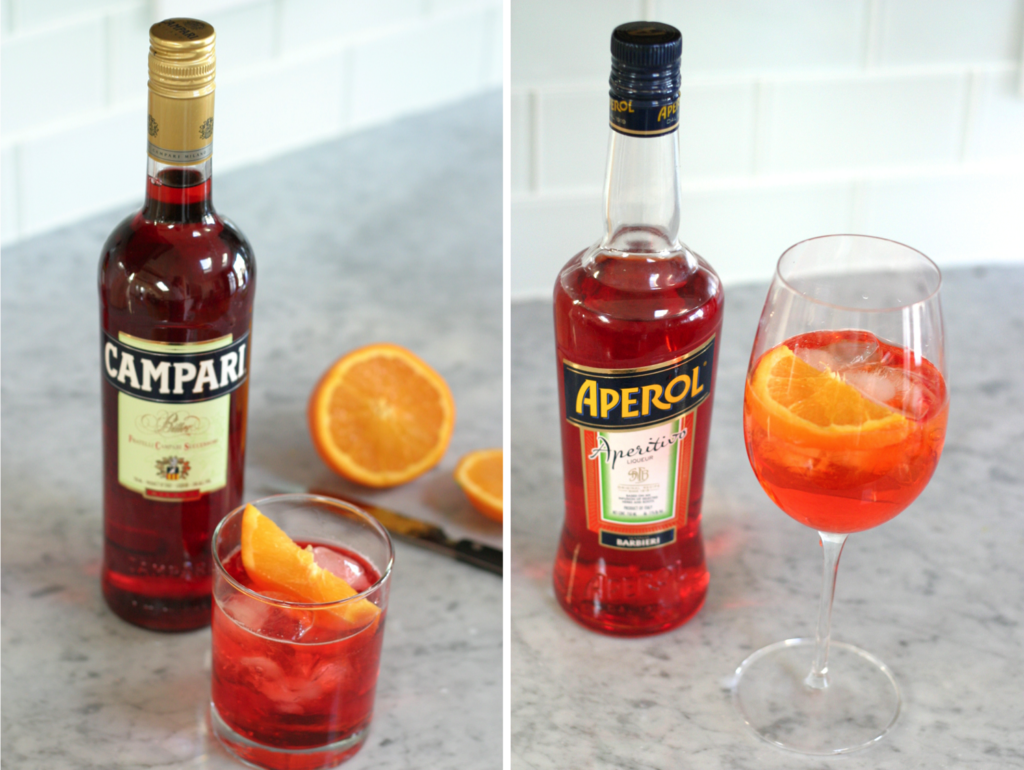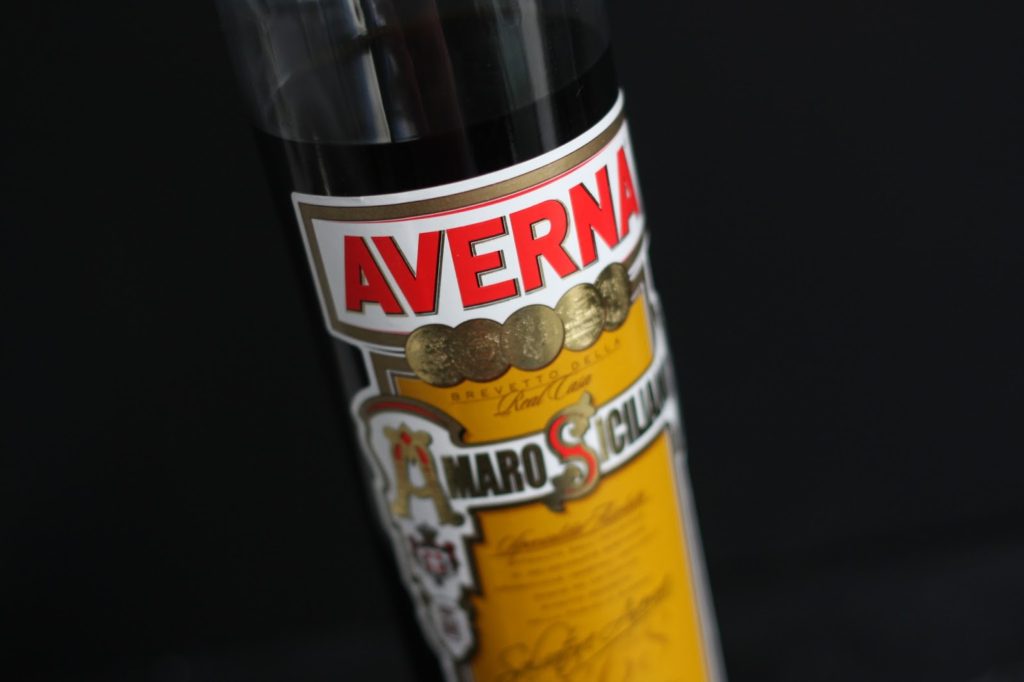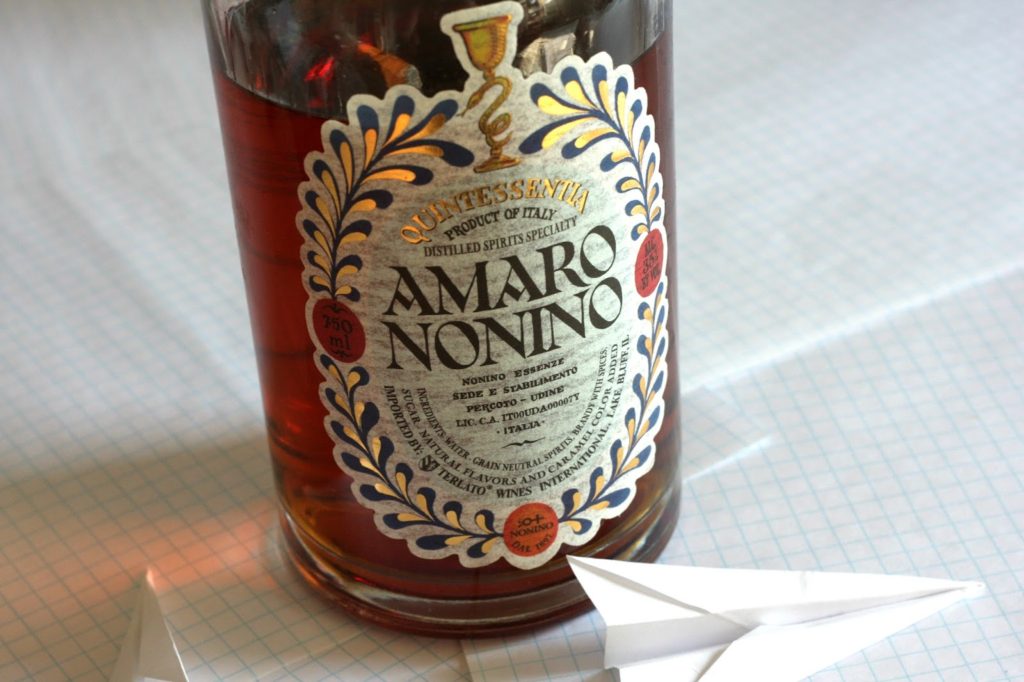Amari have always been one of the most intimidating groups of spirits for me. When I first got into cocktails, I knew absolutely nothing about them. Cynar, Amaro Montenegro, Ramazzotti, Fernet Branca… at bars, these were the ingredients I’d have to quickly Google under the table or just take a chance on because everything else in the drink sounded good. Eventually I became familiar enough with them to at least know that they were all Italian bitters. But my knowledge pretty much ended there.
However, the more you learn about spirits and cocktails, the more frequently you are bound to encounter amari, and they are definitely worth learning a bit about. Primarily because they are delicious. They are fantastic additions to cocktail recipes, but they’re also quite good on their own. A lovely meal at Gramercy Tavern in New York City taught me that amari make fantastic digestifs and convinced me to buy my first bottle, Amaro Averna. I’m starting to think that if you take the plunge and buy one bottle of amaro, it’s just a matter of time before you have five or six different kinds in your bar. I now have four – six if you count Campari and Aperol, which people sometimes don’t.
Amari (the singular is amaro) are bitter herbal liquors traditionally made in Italy. The word amaro means “bitter” in Italian. They’re made by macerating a base liquor like grappa or brandy with herbs, bark, citrus peel, flowers, and spices. Like many older spirits, they were initially sold as health tonics. They’re traditionally consumed at room temperature as digestifs, as their bitterness is supposed to aid in digestion. However, most are also sweet enough that they make a really delicious end to a meal.
If you’re interested in amari for cocktails, it can seem like a daunting task to pick one or two to invest in. They’re not interchangeable, and they all have very unique tastes. But it’s fun to swap one for another in a recipe and see how it works. I recommend trying several kinds at bars to see what you like. Besides Campari, which is a must for any home bar, I think Cynar and Amaro Averna or Amaro Montenegro are great bottles to start with.
To help you learn a little more about the different amari out there, here’s a guide to some of the popular kinds. Be forewarned: there seems to be some disagreement over what is really considered an amaro. Some people restrict the label to Italian brands, while others consider Amer Picon (French), Jägermeister (German), Becherovka (Czeck), and other foreign brands to be amari as well. As I said above, Campari and Aperol are often omitted from the list. It all depends on how you define an amaro. For the sake of this post, I’m going to stick to the eight most common Italian amari. For some nice info and tasting notes on just about all of them, check out this guide from Kindred Cocktails.
Campari and Aperol ($30, $22) – I haven’t yet found a good argument for why Campari and Aperol should or should not be considered amari. I’m going to go ahead and include them, because I think it makes the whole group seem much more approachable if you realize you’ve already been drinking amaro for years. These two bright red liqueurs are bitter and citrusy, with strong orange notes. They’re more commonly served as aperitifs (before a meal) than as digestifs, and are found in lots of cocktails like the Negroni and Aperol Spritz.
Amaro Averna ($30) – The first “real” amaro I ever bought, Averna is a dark brown, almost syrupy liqueur with strong flavors of spice and raisins with hints of citrus, menthol, and bitter cinchona bark (the same stuff used to make kina and tonic water). The bitterness is not too intense, making it a good introductory amaro.
Amaro Montenegro ($25) – I don’t have a bottle of Montenegro yet, though it’s probably only a matter of time. I was introduced to this one by a friend who recently started bartending. The same night, one of his colleagues served us a coke float with Amaro Montenegro, and it was awesome. Montenegro is very dark and very sweet, but with citrusy and piney notes. It’s on the lower end of the bitterness spectrum, similar to Averna.
Ramazzotti ($25) – I don’t think I’ve ever tried Ramazzotti. It’s another dark amaro, quite thick and sweet. I’ve seen its flavor described with words such as root beer, anise, blood orange, cinchona bark, cinnamon, rhubarb, and pie spice. It’s similar to Averna and Montenegro in terms of color and bitterness.
Amaro Nonino ($50) – I just bought a bottle of Amaro Nonino, and I’ve got a Bottle Buy post lined up for you in a couple of weeks. I love Nonino. It’s lighter in color than Averna, a rich brown, and its flavor is light and sweet. I find it to have a strong nutty taste, with flavors of vanilla, caramel, spices, and a hint of anise. Like Averna, it’s not terribly bitter. I’d say it’s a definite crowd-pleaser, and the price tag is the only thing stopping me from telling you to go out and buy it right now.
Cynar ($20) – This is another one I now have in my bar and will introduce soon. It’s another great starter amaro because it’s very cheap and it works in a lot of different drinks. It’s also quite different from Averna and Nonino in that it’s less sweet and more bitter. Its primary flavoring is artichoke, but don’t let that turn you off. It’s surprisingly similar to Campari, though definitely more vegetal in flavor, and also more bitter. Using it instead of Campari in cocktail recipes almost always yields an interesting and delicious product.
Fernet Branca ($30) – This one is quite popular these days, and is getting a reputation as a hipster favorite. It’s also much-loved by industry folks, and shots of Fernet are often shared by and among bartenders. Fernet is not an amaro for the faint of heart. It’s very bitter, not sweet, and has a strong minty flavor. I’ve seen the term “mouth numbing” used not infrequently. It’s definitely an acquired taste, but people who like it really like it.
This little list barely scratches the surface of all the amari out there. Some other Italian varieties you might encounter are Amaro Braulio, Branta Menta, Rhabarbara Zucca, Cardamaro, Amaro al Tartufo, Amaro Ciociaro, Luxardo, Amaro Lucano, Amaro Nardini, and Meletti. American distilleries are also getting to the amaro game; two you might start seeing are Tempus Fugit’s Gran Classico and St. George’s new Bruto Americano.
So what should you make with your amari? There are lots of cocktails out there that use these as ingredients. If you’re ad-libbing, a great way to drink them is with club soda or tonic water. Try a classic Negroni, and then replace the Campari with some other amari. Another great combination is rye and sweet vermouth with an amaro. You might need to play with the proportions depending on the amaro you’re using.
Already a fan of amari? What’s your favorite?











This is so useful – I was just plotting a post on Averna and cocktails you can use it in. That Kindred Cocktails link is brilliant too – I love that some are labelled 'for the experienced amaro lover.' That's what I need to become. I'll know I've made it if I can do shots of Fernet Branca without grimacing.
Glad you found it useful! I'm with you on the Fernet – so far I don't get the appeal. I look forward to your Averna post! So far I haven't used it in cocktails as much as I expected (though I've made enough Black Manhattans to make a serious dent in the bottle).
Go get yourself a bottle of Montenegro. It is one of the of the most interesting bottles I've purchased in a while. Florally, sweet, and just enough bitter bite. It is amazing in cocktails, and super fun to experiment with. Also, in the main image there was a bottle of Gran Classico, but you didn't really talk about it. How does it compare to the other bottles in the post?
The Gran Classico seemed like an oddball in the list of Italian amari, so I ended up not really talking about it. I like it a lot. To me, it's somewhere between Cynar and Nonino in flavor. It's thick and sweet, but with a vegetal bitterness that the Nonino and Averna lack.